CR2016 vs CR2032 Lithium Batteries - What is the Difference?
BATTERY LITHIUM 3V COIN 20MM
Panas on Lithium coin CR2032 batteries is the most common battery coin providing Long-lasting, reliable power for various devices. Panasonic Lithium coin CR2016 batteries provide long-lasting reliable power in various devices. The CR2016 is frequently used in fitness appliances, digital watches, car key remotes, calculators, toys, and more. This article is going to cover the differences between CR2032 and CR2016 from the perspective of description, temperature characteristics, dimensions, features, and more details.

CR2016 vs CR2032 Lithium Batteries - What is the Difference?
- CR2032 Description
- CR2016 Description
- CR2032 Specifications
- CR2016 Specifications
- Specifications
- Comparison of Temperature Characteristics of the CR2016 vs CR2032
- Comparison of Dimensions of the CR2016 vs CR2032
- Comparison of Features of the CR2016 vs CR2032
- CR2032 Operating Voltage vs. Load Resistance
- CR2032 Capacity vs. Load Resistance
- CR2016 Discharge Characteristics after storage
- CR2016 Discharge Load vs. Cell Capacity
- CR2016 Pulse Discharge Characteristics
- Parts with Similar Specs
- Trend Analysis
- Datasheet PDF
CR2032 Description
Panasonic Lithium coin CR2032 batteries are the most common battery coin providing Long-lasting, reliable power for various devices. They are used to power small electronic devices such as calculators, wrist watches: various medical devices, fitness appliances, toys, etc.
CR2016 Description
Panasonic Lithium coin CR2016 batteries provide long-lasting reliable power in various devices. The CR2016 is frequently used in fitness appliances, digital watches, car key remotes, calculators, toys, and more.
CR2032 Specifications
•Nominal Capacity: 225 mAh
•Nominal Voltage: 3V
•Weight: 2.9g
•Operating Temperature: -30°C - +60°C
CR2016 Specifications

CR2016 Specifications
Specifications
- TypeParameter
- Factory Lead Time22 Weeks
- Mount
In electronic components, the term "Mount" typically refers to the method or process of physically attaching or fixing a component onto a circuit board or other electronic device. This can involve soldering, adhesive bonding, or other techniques to secure the component in place. The mounting process is crucial for ensuring proper electrical connections and mechanical stability within the electronic system. Different components may have specific mounting requirements based on their size, shape, and function, and manufacturers provide guidelines for proper mounting procedures to ensure optimal performance and reliability of the electronic device.
External - Material
In electronic components, the parameter "Material" refers to the substance or material used in the construction of the component. The choice of material is crucial as it directly impacts the component's performance, durability, and other characteristics. Different materials have varying properties such as conductivity, resistance to heat, corrosion resistance, and mechanical strength, which determine how the component functions in a circuit. Common materials used in electronic components include metals like copper and aluminum, semiconductors like silicon, insulators like ceramics and plastics, and various alloys. Selecting the appropriate material is essential for designing reliable and efficient electronic components.
Lithium - Weight3.1g
- Series
In electronic components, the "Series" refers to a group of products that share similar characteristics, designs, or functionalities, often produced by the same manufacturer. These components within a series typically have common specifications but may vary in terms of voltage, power, or packaging to meet different application needs. The series name helps identify and differentiate between various product lines within a manufacturer's catalog.
CR2032 - Published2006
- Size / Dimension
In electronic components, the parameter "Size / Dimension" refers to the physical dimensions of the component, such as its length, width, and height. These dimensions are crucial for determining how the component will fit into a circuit or system, as well as for ensuring compatibility with other components and the overall design requirements. The size of a component can also impact its performance characteristics, thermal properties, and overall functionality within a given application. Engineers and designers must carefully consider the size and dimensions of electronic components to ensure proper integration and functionality within their designs.
0.79Dia x 0.13 H 20.0mmx3.2mm - Part Status
Parts can have many statuses as they progress through the configuration, analysis, review, and approval stages.
Active - Moisture Sensitivity Level (MSL)
Moisture Sensitivity Level (MSL) is a standardized rating that indicates the susceptibility of electronic components, particularly semiconductors, to moisture-induced damage during storage and the soldering process, defining the allowable exposure time to ambient conditions before they require special handling or baking to prevent failures
1 (Unlimited) - Max Operating Temperature
The Maximum Operating Temperature is the maximum body temperature at which the thermistor is designed to operate for extended periods of time with acceptable stability of its electrical characteristics.
60°C - Min Operating Temperature
The "Min Operating Temperature" parameter in electronic components refers to the lowest temperature at which the component is designed to operate effectively and reliably. This parameter is crucial for ensuring the proper functioning and longevity of the component, as operating below this temperature may lead to performance issues or even damage. Manufacturers specify the minimum operating temperature to provide guidance to users on the environmental conditions in which the component can safely operate. It is important to adhere to this parameter to prevent malfunctions and ensure the overall reliability of the electronic system.
-30°C - HTS Code
HTS (Harmonized Tariff Schedule) codes are product classification codes between 8-1 digits. The first six digits are an HS code, and the countries of import assign the subsequent digits to provide additional classification. U.S. HTS codes are 1 digits and are administered by the U.S. International Trade Commission.
8506.80.00.00 - Voltage - Rated DC
Voltage - Rated DC is a parameter that specifies the maximum direct current (DC) voltage that an electronic component can safely handle without being damaged. This rating is crucial for ensuring the proper functioning and longevity of the component in a circuit. Exceeding the rated DC voltage can lead to overheating, breakdown, or even permanent damage to the component. It is important to carefully consider this parameter when designing or selecting components for a circuit to prevent any potential issues related to voltage overload.
3V - Termination Style
"Termination style" in electronic components refers to the method used to connect the component to a circuit board or other electronic devices. It determines how the component's leads or terminals are designed for soldering or mounting onto the circuit board. Common termination styles include through-hole, surface mount, and wire lead terminations.Through-hole components have leads that are inserted through holes in the circuit board and soldered on the other side. Surface mount components have flat terminals that are soldered directly onto the surface of the circuit board. Wire lead terminations involve attaching wires to the component for connection.The choice of termination style depends on factors such as the type of component, the manufacturing process, and the space available on the circuit board. Different termination styles offer various advantages in terms of ease of assembly, reliability, and space efficiency in electronic designs.
Requires Holder - Approval Agency
The parameter "Approval Agency" in electronic components refers to the organization responsible for testing and certifying that a component meets specific safety, quality, and performance standards. These agencies evaluate products to ensure compliance with industry regulations and standards, providing assurance to manufacturers and consumers. Approval from recognized agencies can enhance a component's marketability and acceptance in various applications, particularly in sectors like automotive, aerospace, and healthcare. Common approval agencies include Underwriters Laboratories (UL), International Electrotechnical Commission (IEC), and the American National Standards Institute (ANSI).
UL - Output Voltage
Output voltage is a crucial parameter in electronic components that refers to the voltage level produced by the component as a result of its operation. It represents the electrical potential difference between the output terminal of the component and a reference point, typically ground. The output voltage is a key factor in determining the performance and functionality of the component, as it dictates the level of voltage that will be delivered to the connected circuit or load. It is often specified in datasheets and technical specifications to ensure compatibility and proper functioning within a given system.
3V - Voltage
Voltage is a measure of the electric potential difference between two points in an electrical circuit. It is typically represented by the symbol "V" and is measured in volts. Voltage is a crucial parameter in electronic components as it determines the flow of electric current through a circuit. It is responsible for driving the movement of electrons from one point to another, providing the energy needed for electronic devices to function properly. In summary, voltage is a fundamental concept in electronics that plays a key role in the operation and performance of electronic components.
3V - Terminal Type
Terminal type or emulation specifies how your computer and the host computer to which you are connected exchange information.
BUTTON - Battery Chemistry
A battery is a device that stores chemical energy, and converts it to electricity. This is known as electrochemistry and the system that underpins a battery is called an electrochemical cell. A battery can be made up of one or several (like in Volta's original pile) electrochemical cells.
Lithium Manganese Dioxide - Number of Cells1
- Battery Cell Size
The most common lithium-ion cell is the 18650 (the numbers define the physical dimensions and shape as follows: 18mm in diameter, 65mm long and the 0 means it has a round cross-section) which is due to its widespread use in laptop battery packs.
Coin 20.0mm - Capacity
In electronic components, "Capacity" typically refers to the maximum amount of electrical charge that a component can store. It is measured in units called farads (F). Capacitors are the most common components that have a capacity rating. The capacity of a capacitor determines how much energy it can store and release when connected in a circuit. Higher capacity capacitors can store more charge and are often used in applications requiring larger energy storage or filtering capabilities. It is important to select a capacitor with the appropriate capacity to ensure proper functioning of the circuit.
225mAh - Discharge Rate
The "Discharge Rate" in electronic components refers to the rate at which a component can release stored energy or power. This parameter is particularly important in devices that use batteries or capacitors, as it determines how quickly these components can discharge their stored energy. A high discharge rate means that the component can release energy quickly, while a low discharge rate indicates a slower release of energy. Understanding the discharge rate of electronic components is crucial for designing circuits and systems that require specific power delivery characteristics.
200μA - Battery Type
Battery type refers to the specific chemistry and design of a battery that determines its characteristics, performance, and applications. Common battery types include alkaline, lithium-ion, nickel-metal hydride, and lead-acid, each with unique properties such as voltage, capacity, energy density, and discharge rates. The choice of battery type affects factors such as longevity, rechargeability, and suitability for various electronic devices and systems. Understanding battery type is crucial for selecting the appropriate power source for specific electronic components and applications.
PRIMARY - Diameter
In electronic components, the parameter "Diameter" typically refers to the measurement of the width of a circular component, such as a resistor, capacitor, or inductor. It is a crucial dimension that helps determine the physical size and fit of the component within a circuit or on a circuit board. The diameter is usually measured in millimeters (mm) or inches (in) and is important for ensuring proper placement and soldering of the component during assembly. Understanding the diameter of electronic components is essential for selecting the right size for a specific application and ensuring compatibility with other components and the overall design of the circuit.
20mm - Height3.2mm
- Radiation Hardening
Radiation hardening is the process of making electronic components and circuits resistant to damage or malfunction caused by high levels of ionizing radiation, especially for environments in outer space (especially beyond the low Earth orbit), around nuclear reactors and particle accelerators, or during nuclear accidents or nuclear warfare.
No - RoHS Status
RoHS means “Restriction of Certain Hazardous Substances” in the “Hazardous Substances Directive” in electrical and electronic equipment.
Non-RoHS Compliant - Lead Free
Lead Free is a term used to describe electronic components that do not contain lead as part of their composition. Lead is a toxic material that can have harmful effects on human health and the environment, so the electronics industry has been moving towards lead-free components to reduce these risks. Lead-free components are typically made using alternative materials such as silver, copper, and tin. Manufacturers must comply with regulations such as the Restriction of Hazardous Substances (RoHS) directive to ensure that their products are lead-free and environmentally friendly.
Lead Free
Comparison of Temperature Characteristics of the CR2016 vs CR2032

CR2016 Temperature Characteristics

CR2032 Temperature Characteristics
Comparison of Dimensions of the CR2016 vs CR2032

CR2016 Dimensions
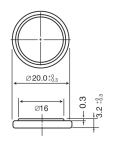
CR2032 Dimensions
Comparison of Features of the CR2016 vs CR2032
Features of the CR2032 include the following :
Good pulse capability
High discharge characteristics
Stable voltage level during discharge
Long-term reliability
Features of the CR2016 include the following :
Nominal capacity is determined at an end voltage of 2.0V when the battery is allowed to discharge at a standard current Level at +23°C.
The current value is determined to be the level at Mvch 50% of the fxxnmal capacity is obtained with an end voltage of 2.0V at *23°C.
Current value for obtaining 2.0V cell voyage when the pulse is applied for 15 seconds at 50% discharge depth (50% of the nominal capacity) at +23°C.
CR2032 Operating Voltage vs. Load Resistance
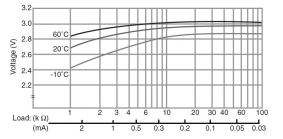
CR2032 Operating Voltage vs. Load Resistance
CR2032 Capacity vs. Load Resistance

CR2032 Capacity vs. Load Resistance
CR2016 Discharge Characteristics after storage
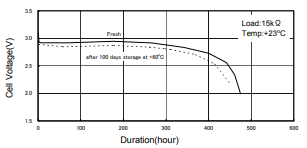
CR2016 Discharge Characteristics after storage
CR2016 Discharge Load vs. Cell Capacity
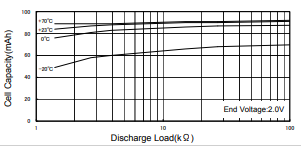
CR2016 Discharge Load vs. Cell Capacity
CR2016 Pulse Discharge Characteristics
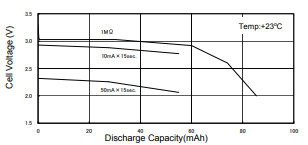
CR2016 Pulse Discharge Characteristics
Parts with Similar Specs
Trend Analysis
Datasheet PDF
- Datasheets :
- MSDS Material Safety Datasheet :
 Microchip PIC18F26J50ISP Microcontroller Datasheet Overview
Microchip PIC18F26J50ISP Microcontroller Datasheet Overview28 February 2024135
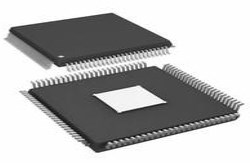 AD9910 Digital Synthesizer: Datasheet, Schematic and Pinout
AD9910 Digital Synthesizer: Datasheet, Schematic and Pinout26 July 20214211
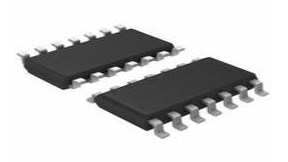 ADA4622-4 Precision Op-Amp: Features, Pinout and Datasheet
ADA4622-4 Precision Op-Amp: Features, Pinout and Datasheet13 December 2021789
 LM335 Temperature Sensor: Alternative, Pinout and Datasheet
LM335 Temperature Sensor: Alternative, Pinout and Datasheet06 September 20215116
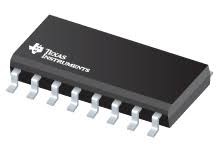 TL494IN Controller: Pinout, Specification, Datasheet
TL494IN Controller: Pinout, Specification, Datasheet12 May 20217358
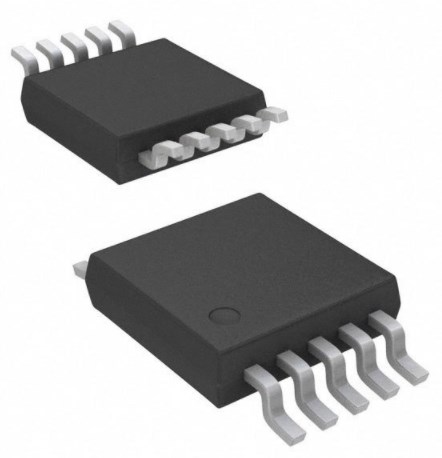 INA226AIDGSR Amplifier: Pinout, INA226, INA226 vs INA260
INA226AIDGSR Amplifier: Pinout, INA226, INA226 vs INA26010 March 20223909
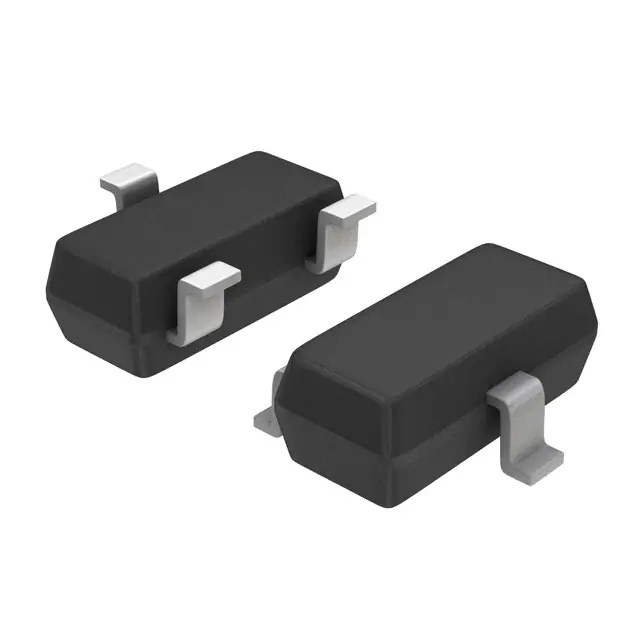 MMBT3904LT1G NPN Transistor: Datasheet, Circuits, and Marking Diagram
MMBT3904LT1G NPN Transistor: Datasheet, Circuits, and Marking Diagram20 August 20212058
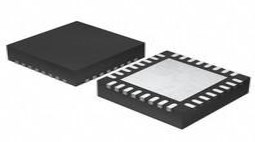 LTC4260 Hot Swap Controller: Pinout, Datasheet and Schematics
LTC4260 Hot Swap Controller: Pinout, Datasheet and Schematics14 September 20211421
 What is 4G Router?
What is 4G Router?27 September 20215232
 How Many Smart Sensors Should a Car Be Equipped With?
How Many Smart Sensors Should a Car Be Equipped With?28 March 20223055
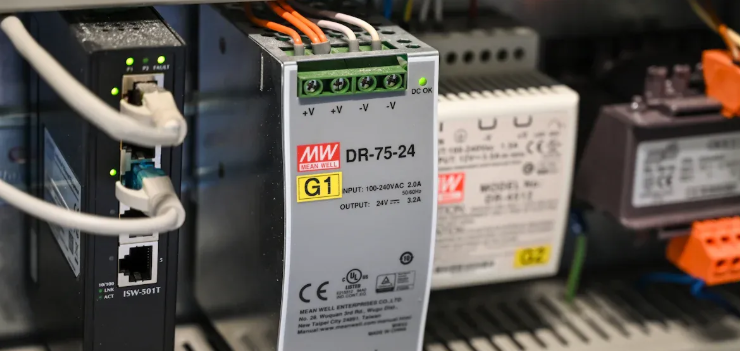 What Makes Time Delay Relays Essential in Automation
What Makes Time Delay Relays Essential in Automation10 July 2025606
 Photoresistor Basics: Types, Principles and Applications
Photoresistor Basics: Types, Principles and Applications16 October 202541046
 Advanced Wide-Bandgap Semiconductor Ultraviolet Photodetectors for Enhanced Detection and Imaging
Advanced Wide-Bandgap Semiconductor Ultraviolet Photodetectors for Enhanced Detection and Imaging04 December 20231621
 Intel Launches Industry's First Stackable, Shareable and Transferable One-Year Semiconductor Technician Certificate Program
Intel Launches Industry's First Stackable, Shareable and Transferable One-Year Semiconductor Technician Certificate Program26 September 20231521
 What is Variable Frequency Driver(VFD)?
What is Variable Frequency Driver(VFD)?20 October 20212302
 What is Mini LED?
What is Mini LED?08 December 20204140
Panasonic - BSG
In Stock
United States
China
Canada
Japan
Russia
Germany
United Kingdom
Singapore
Italy
Hong Kong(China)
Taiwan(China)
France
Korea
Mexico
Netherlands
Malaysia
Austria
Spain
Switzerland
Poland
Thailand
Vietnam
India
United Arab Emirates
Afghanistan
Åland Islands
Albania
Algeria
American Samoa
Andorra
Angola
Anguilla
Antigua & Barbuda
Argentina
Armenia
Aruba
Australia
Azerbaijan
Bahamas
Bahrain
Bangladesh
Barbados
Belarus
Belgium
Belize
Benin
Bermuda
Bhutan
Bolivia
Bonaire, Sint Eustatius and Saba
Bosnia & Herzegovina
Botswana
Brazil
British Indian Ocean Territory
British Virgin Islands
Brunei
Bulgaria
Burkina Faso
Burundi
Cabo Verde
Cambodia
Cameroon
Cayman Islands
Central African Republic
Chad
Chile
Christmas Island
Cocos (Keeling) Islands
Colombia
Comoros
Congo
Congo (DRC)
Cook Islands
Costa Rica
Côte d’Ivoire
Croatia
Cuba
Curaçao
Cyprus
Czechia
Denmark
Djibouti
Dominica
Dominican Republic
Ecuador
Egypt
El Salvador
Equatorial Guinea
Eritrea
Estonia
Eswatini
Ethiopia
Falkland Islands
Faroe Islands
Fiji
Finland
French Guiana
French Polynesia
Gabon
Gambia
Georgia
Ghana
Gibraltar
Greece
Greenland
Grenada
Guadeloupe
Guam
Guatemala
Guernsey
Guinea
Guinea-Bissau
Guyana
Haiti
Honduras
Hungary
Iceland
Indonesia
Iran
Iraq
Ireland
Isle of Man
Israel
Jamaica
Jersey
Jordan
Kazakhstan
Kenya
Kiribati
Kosovo
Kuwait
Kyrgyzstan
Laos
Latvia
Lebanon
Lesotho
Liberia
Libya
Liechtenstein
Lithuania
Luxembourg
Macao(China)
Madagascar
Malawi
Maldives
Mali
Malta
Marshall Islands
Martinique
Mauritania
Mauritius
Mayotte
Micronesia
Moldova
Monaco
Mongolia
Montenegro
Montserrat
Morocco
Mozambique
Myanmar
Namibia
Nauru
Nepal
New Caledonia
New Zealand
Nicaragua
Niger
Nigeria
Niue
Norfolk Island
North Korea
North Macedonia
Northern Mariana Islands
Norway
Oman
Pakistan
Palau
Palestinian Authority
Panama
Papua New Guinea
Paraguay
Peru
Philippines
Pitcairn Islands
Portugal
Puerto Rico
Qatar
Réunion
Romania
Rwanda
Samoa
San Marino
São Tomé & Príncipe
Saudi Arabia
Senegal
Serbia
Seychelles
Sierra Leone
Sint Maarten
Slovakia
Slovenia
Solomon Islands
Somalia
South Africa
South Sudan
Sri Lanka
St Helena, Ascension, Tristan da Cunha
St. Barthélemy
St. Kitts & Nevis
St. Lucia
St. Martin
St. Pierre & Miquelon
St. Vincent & Grenadines
Sudan
Suriname
Svalbard & Jan Mayen
Sweden
Syria
Tajikistan
Tanzania
Timor-Leste
Togo
Tokelau
Tonga
Trinidad & Tobago
Tunisia
Turkey
Turkmenistan
Turks & Caicos Islands
Tuvalu
U.S. Outlying Islands
U.S. Virgin Islands
Uganda
Ukraine
Uruguay
Uzbekistan
Vanuatu
Vatican City
Venezuela
Wallis & Futuna
Yemen
Zambia
Zimbabwe




















